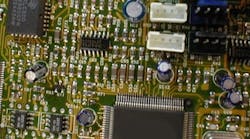Over the years, I've learned that the most important thing is often not the most obvious thing. For example, back in my general assignment reporting days, I discovered that the most important people in the circuit court and county offices in Cook County, Ill., were not the attorneys and politicians, but rather the clerks that kept each system running. And the big shots knew it, too, because I could see they kept up regular deliveries of flowers and treats.
Likewise, also during the late 1980s, I met a young lady and recent college graduate who had just started working at Goldman Sachs in Chicago. She was no big-deal trader, but she quickly and almost unwittingly became one of the most crucial people there because she was assigned to be the person that coordinated the technicians that were needed to keep all the traders' phones, communication networks and new PCs up and running. She was no engineer herself, but she got them where they needed to be. And she was rewarded magnificently because the financial giants knew their continued fortune depended on her.
Industrial networking hardware is just like these unassuming clerks and technical coordinators. At first, it looks like it's not doing anything important, except for a few blocking indicators. But the basic platform and infrastructure it provides makes all of the world's essential control and automation applications possible. Without networking hardware, all of software's invisible ones and zeros would be lying around on chips—truly doing nothing. Hardware is still the pathway that brings them into a useful existence.
Likewise, point-to-point, 4-20 mA cable and connectors have evolved and sometimes been replaced by twisted-pair fieldbuses and wireless components. However, because they're still moving data packets and information, even fieldbus loops still need plenty of wiring and ties to switches and routers. And what's on both the transmitting and receiving ends of all those wireless links? You guessed it: more cabling. It seems that industrial networking is not without a sense of irony—and sometimes plenty of it.
Similarly, I've learned that the moment I think nothing's happening with industrial network hardware, I will find that I've jinxed myself and will immediately find a lot going on with its various component-related technologies and applications. For example, while researching my TechFlash column for Control Design's June issue, I was struck by all the activity and new materials being used to make wire and cabling.
"There's been a lot of growth lately in the use of sensors related to more sophisticated automation, more components for new system installations and increasing use of intelligent robots, and all of them need more and different types of cables and connectors," reports Dale Long, industrial applications engineer at C&M (www.cmcorporation.com). "It's not just power anymore. It's communication and control, and so we're seeing more demand for 600 V-rated, multi-conductor and fieldbus cables with some power."
Frank Koditek, product manager for industrial cable at Belden (www.belden.com), adds, "Ethernet is getting into more specific types of controls and electrical equipment manufacturing, such as switch gears and motor control centers (MCCs). These typically need NEMA and UL ratings, and so their cables need them, too. Ethernet is also proliferating everywhere on the controls layer, and then down past that to the I/O layer and devices, such as machines, robots and other motion applications. So they need more high-flexibility, longer-life cables as well." The same demands and trends can be seen in this issue's Bandwidth column on connectors and cordsets.
Perhaps because of these growing needs, many engineers, system integrators and end users seem to be waking up to the importance of their networking hardware. For instance, our managing editor for digital media, Katherine Bonfante, recently compiled research indicating a fairly huge increase in searches about industrial networking topics among visitors to our www.ControlDesign.com website, which oversees our www.IndustrialNetworking.net microsite.
In the first seven months of 2010, only one of the top 50 search terms on the website was network-related. It was "wireless," and it placed 21st. However, for the same period this year, 11 of the top 50 internal search terms were clearly network-based, with "EtherCat," "EtherNet/IP," "Profinet," "Ethernet" and "Powerlink Ethernet" falling into the top 20. Not too shabby. Top that, software.




